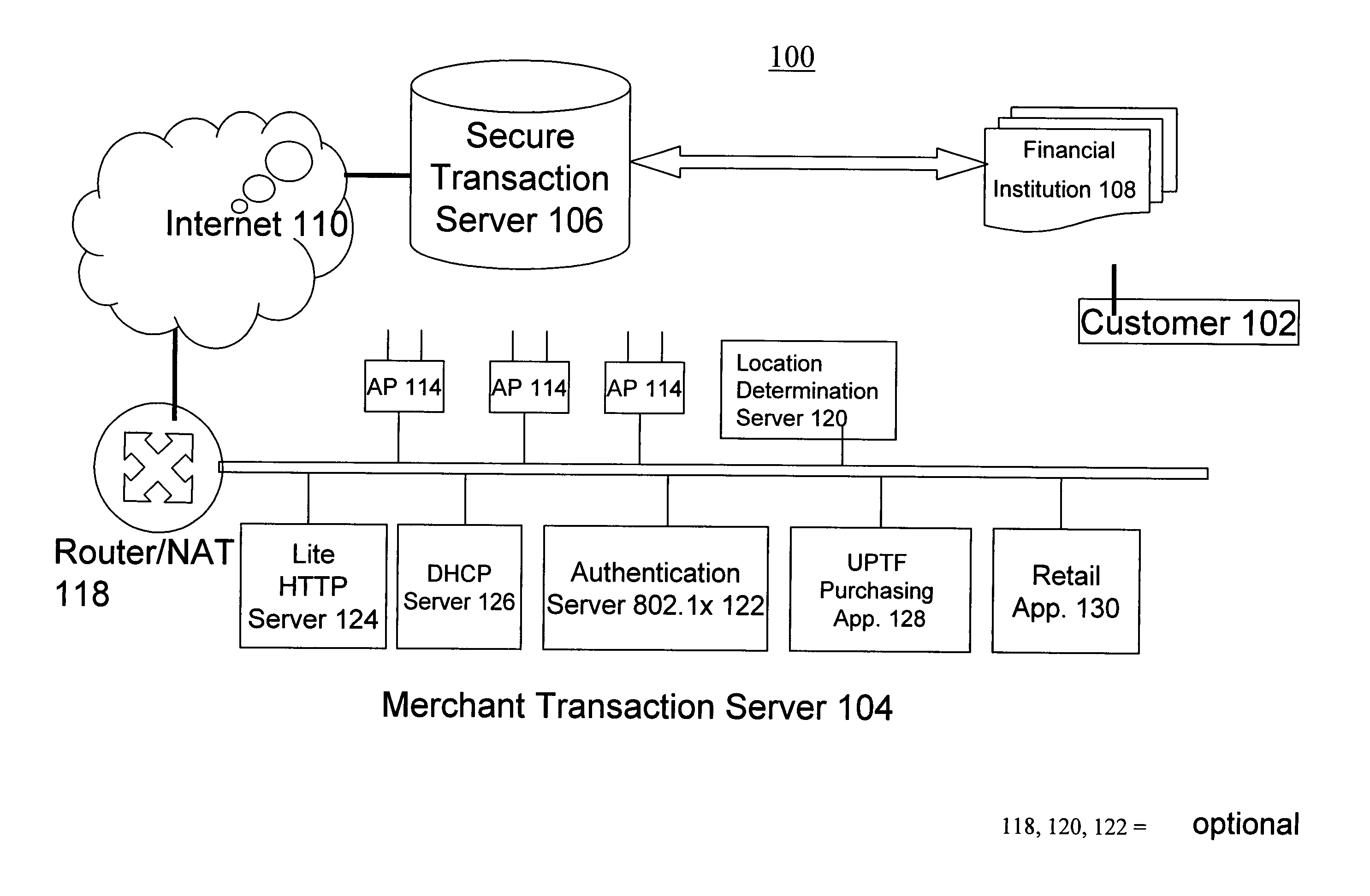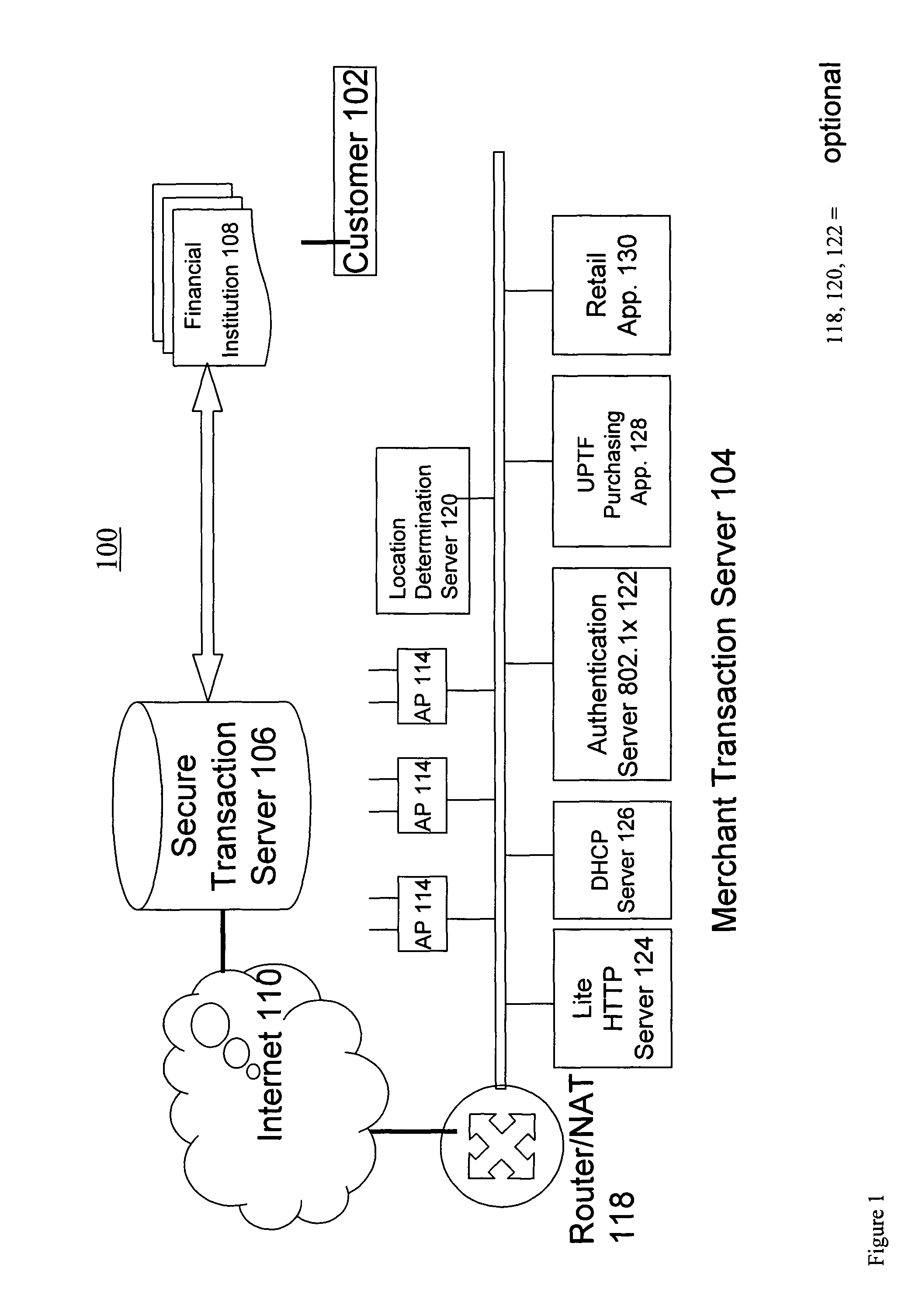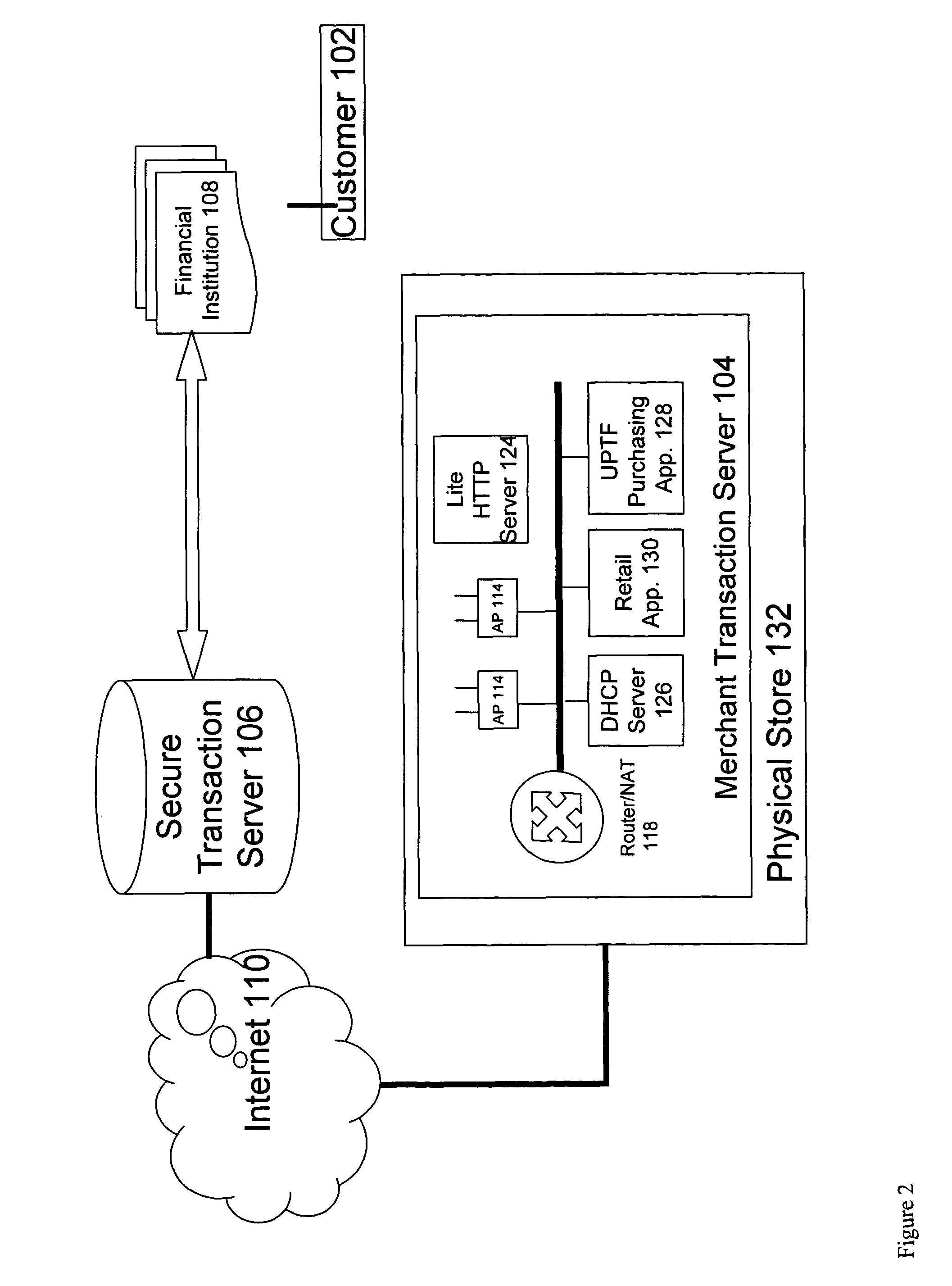Framework and system for purchasing of goods and services
a technology for purchasing goods and services and financial transactions, applied in payment protocols, instruments, data processing applications, etc., can solve the problems of merchants' primarily incurred fraud costs, low pc penetration, and high cost of current means and methods for consumer e-commerce transactions, so as to reduce credit card fraud, reduce merchant's risk of fraudulent transactions, and accelerate the transaction cycle
- Summary
- Abstract
- Description
- Claims
- Application Information
AI Technical Summary
Benefits of technology
Problems solved by technology
Method used
Image
Examples
Embodiment Construction
[0112]The present invention is directed to a framework and a system for purchasing of goods and services. There are many aspects of the framework and system for purchasing of goods and services described herein.
[0113]The present invention presents a new concept for performing purchasing transactions in pervasive service environments, such as ordering and paying, in physical stores (physical Points Of Sale) by a consumer that uses a mobile device. The invention includes an overall framework, system architecture, a consumer operating a universal Pervasive Transaction Device 102 (UPTD 102), a merchant operating a merchant device 102, a third party operating a device that verifies purchasing transactions, and business models for the operator of such a system.
[0114]System Architecture
[0115]The system architecture of the UPTF of the present invention is shown in FIGS. 1-6, reference to which is made after an overview of the present invention.
[0116]The present invention includes Universal ...
PUM
 Login to View More
Login to View More Abstract
Description
Claims
Application Information
 Login to View More
Login to View More - R&D
- Intellectual Property
- Life Sciences
- Materials
- Tech Scout
- Unparalleled Data Quality
- Higher Quality Content
- 60% Fewer Hallucinations
Browse by: Latest US Patents, China's latest patents, Technical Efficacy Thesaurus, Application Domain, Technology Topic, Popular Technical Reports.
© 2025 PatSnap. All rights reserved.Legal|Privacy policy|Modern Slavery Act Transparency Statement|Sitemap|About US| Contact US: help@patsnap.com



